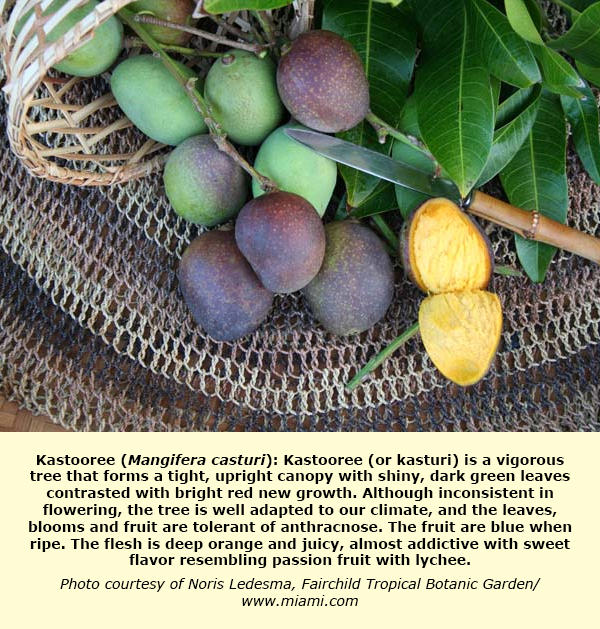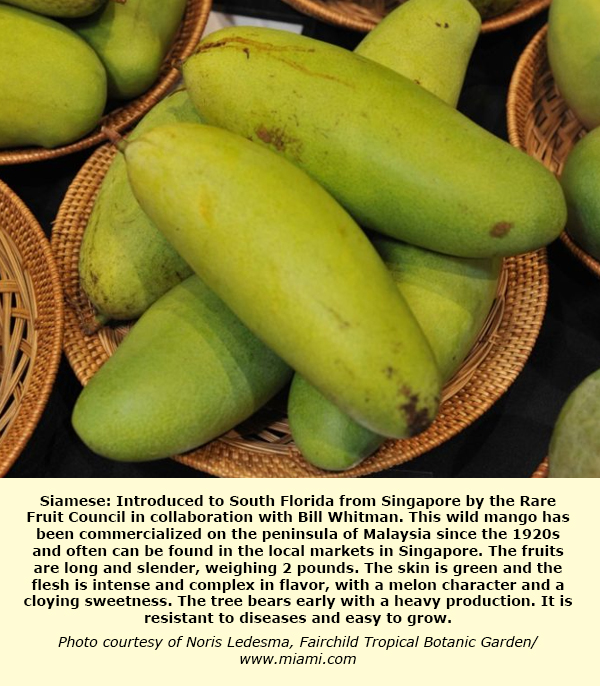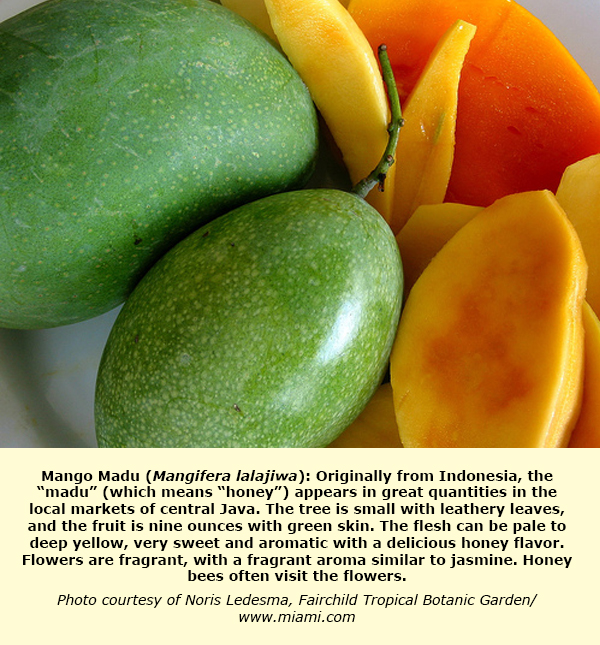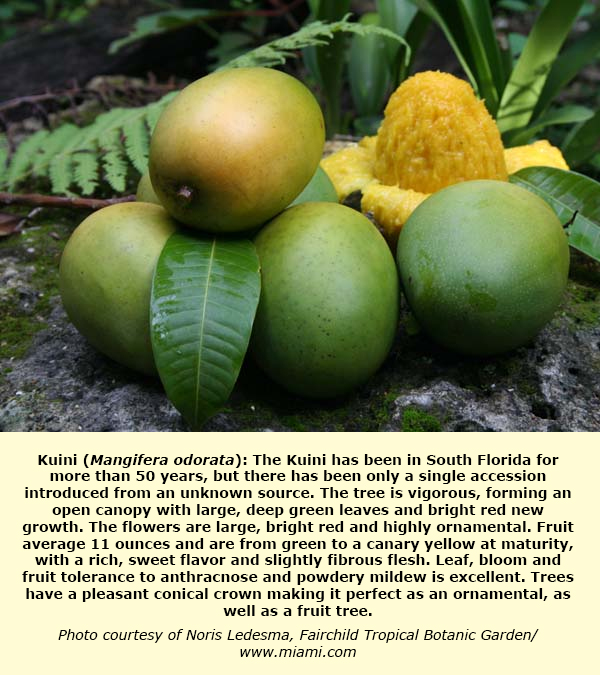There is a wide diversity of wild mango (Mangifera) species that bear edible fruit. They are related to the mango we all know and love, Mangifera indica, but they are not the same. Street markets in Borneo, Malaysia, and Indonesia will sometimes display wild mangoes for sale, just as they have for hundreds of years, but their consumption lies predominantly with elderly locals. Wild mangoes are used mainly as vegetables, consumed in salads, pickles and chutneys. The versatility of these mangoes provides a full range of flavors and uses.
These wild, edible mangoes are in danger of extinction and most certainly represent an important resource for the future of mangoes. The importance of conserving these species and their genetic potential is recognized by the scientific community, and Fairchild Tropical Botanic Garden has been exploring mangoes and their relatives for the past two decades.
In the search for the ancestors of the mango we have hunted for the mangga aer (Mangifera laurina), kuini (Mangifera odorata), bembangan (Mangifera pajang), bachang (Mangifera foetida) and the white mango (Mangifera caesia). These wild mangoes still dominate the remnant forests in some places in Asia, Indonesia and Malaysia and are present in some home gardens in these regions.
Many of these fruits don’t even look like a mango. From a distance, they have a spectacular appearance, and they also have a big spectrum of flavors that range from the sweet and earthy intense flavor of kuini to the perfect pleasant dulcet, honey flavor of the mango madu.
Fairchild has identified and domesticated some of these jewels of the jungle that can now grow successfully in South Florida. Wild mangoes are usually not well adapted to our soils, but we have made superior selections — ones that will allow for precocious fruiting and quality mangoes in your backyard.
Perhaps the superior genes contained within these species have already found their way off Borneo and into modern mangoes.
Conservation of these wild mangoes is imperative, as they are increasingly threatened by habitat loss. Conservation methods include efforts both in and outside their natural habitat. Wild mangoes form part of the tropical rainforest canopy of Southeast Asia. Few of these forest giants remain in their native habitat, and if we cannot bring about the horticultural acceptance of these fruit, we may lose this important resource.
Indeed, this year at the International Mango Festival at Fairchild, we will have a display of wild mangoes, some available as young trees that can now be planted in your garden. You can become a citizen scientist and help us preserve these wild mangoes and play a part in the future of the mango. Here are some:




Here are some tips for growing your own wild mangoes in South Florida:
- Planting the tree: Select an area where the tree gets sufficient sunlight for good production.
- Water the tree until established — one to three months. Do not irrigate after establishment, as irrigation will increase disease susceptibility and lower fruit quality.
- Fertilize lightly. We recommend that no nitrogen fertilizers be applied. Fertilize when your tree is active, not during the wintertime. We use a 0-0-50 formulation, sprinkled lightly below the drip-line of the canopy three times per year. Also fertilize three times per year with foliar micronutrients that include magnesium, zinc and manganese.
- Tipping: Begin tipping in the first year and continue for the life of the tree. Trees should be tipped every 20 inches.
- Prune trees for size control after harvest each year. Pruning maintains the health, productivity and size of the trees. After harvest, the trees are pruned by hand, and the branches, twigs and leaves are mulched in place or ground up for use as mulch in other locations.
- Thin major limbs annually within the canopy to improve fruit color and production and avoid disease.
- Identify insects first. Insects are presumed innocent until proven guilty of damage. Most are not damaging. Pesticides should be the final option.
- Weeds are allowed to provide a nectar source for bees, flies and wasps during the spring flowering season. Control weeds through mulching and shading by the trees themselves.
- Harvest fruit when they are mature on the tree and store for proper ripening.
Written by: Noris Ledesma
Source: Miami.com
